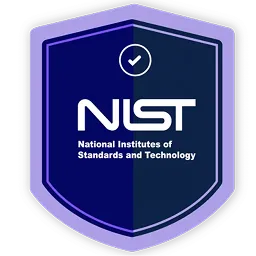Identity providers ensure the right users can access the right systems at the right time for the right reasons. It checks if users are who they say they are, using just one set of login details. Then, it decides what users can access based on their roles and permissions. This makes logging in easier for users and keeps everything secure by controlling access in one central place.
The shift to centralized login methods has transformed authentication in recent years. It allows users to easily use their identities from platforms like Google to access multiple services seamlessly. Studies show that 86% of users find creating new accounts frustrating, with 77% preferring social login or similar solutions. This underscores the importance of identity providers in modern online experiences.
In this article, we'll explore the basics of identity providers, how they work, and their role in streamlining identity management.
What Is An Identity Provider?
An Identity Provider (IdP) is like a digital gatekeeper that creates, stores, and manages user’s identities toaccess various online services. It's the system responsible for verifying who you are when you log in to apps, websites, or other digital platforms.
Additionally, an IdP can provide authentication services to third-party Service Providers (SPs), including applications, websites, or other digital services. By decoupling the user from the service, IdPs allow users to authenticate using their preferred identity provider while enabling Service Providers to assign different authorization levels based on the chosen IdP.
To put it simply, an IdP offers user authentication as a service. For instance, when you use your Google account to sign in to an e-commerce website, Google acts as the IdP, confirming your identity to the website. Similarly, any website that requires you to log in relies on an IdP to check if you're who you claim to be. This authentication can involve using a password or other verification methods.
From the IdP's perspective, users are known as "principals," whether they're humans or robots. The IdP can authenticate any entity, including devices, and its main job is to keep track of these entities and determine whether they're allowed to access sensitive data. In essence, the IdP ensures that only authorized individuals or devices can gain access to protected information.
In larger organizations, managing user identities and access permissions can be complex. IdPs play a vital role in streamlining this process by efficiently provisioning, authenticating, and managing user identities. This scalability accommodates a growing number of users, reduces the administrative overhead for IT teams, and ensures robust access control measures are in place. Thus, Identity Providers serve as foundational elements in enterprise security infrastructure, facilitating secure and seamless access to digital resources while maintaining stringent access controls.
Core Functions of an Identity Provider
An Identity Provider is the cornerstone of IAM frameworks, offering crucial functionalities that streamline authentication, authorization, and access control processes. Here are some core functionalities of an identity provider:-
1: Authentication
Authentication is the process of verifying the identity of a user. The Identity Provider (IdP) ensures that individuals are who they claim to be before granting them access to resources or services. This verification is typically achieved through various methods, including:
- Passwords: Users provide a unique combination of characters known only to them, which the IdP validates against stored credentials.
- Multi-factor authentication (MFA): Enhances security by requiring users to provide multiple forms of identification, such as passwords, a one-time code sent to their mobile device, or a biometric scan.
Authentication is crucial for ensuring that only authorized users can access protected resources, safeguarding sensitive data from unauthorized access.
2: Authorization
Authorization determines what actions or resources a user can access after their identity has been authenticated. The IdP assigns users specific access rights and permissions based on their roles, responsibilities, and job functions within an organization. Key aspects of authorization include:
- Role-based access control (RBAC): Simplifying access management and ensuring consistency, RBAC assigns permissions to users based on predefined roles.
- Access Rights/Permissions management: Allowing for fine-grained control over access privileges, this aspect involves the granular assignment of specific access rights/permissions to users or groups.
By effectively managing user access rights, the IdP ensures that individuals have access to the resources necessary to perform their job functions while preventing unauthorized access to sensitive data.
3: Single Sign-On (SSO)
Single Sign-On (SSO) is a mechanism that allows users to access multiple applications or systems with a single set of credentials. The IdP enables users to authenticate once, usually at the beginning of a session, and then access all connected applications or systems without needing to log in again. Key features of SSO include:
- Centralized authentication: Users authenticate once with the IdP, providing access to all connected applications or systems without requiring additional logins.
- Seamless access: Users can switch between applications or systems without re-entering their credentials, improving productivity and workflow efficiency.
- Reduced login fatigue: By eliminating the need to remember and enter multiple sets of credentials, SSO enhances the user experience and reduces the burden of managing multiple logins.
Overall, SSO enhances security by reducing the risk of password fatigue, minimizing the likelihood of users resorting to insecure password practices, and enabling centralized control over user access.
Understanding these core functions of an Identity Provider (IdP) is essential for organizations seeking to establish robust identity and access management (IAM) practices.
How Do Identity Providers Work?
Identity Providers (IdPs) play a crucial role in modern authentication and authorization processes by facilitating communication between various parties involved. Here's a detailed explanation of how IdPs work and the mechanisms they use:
Communication Protocols:
IdPs use standardized protocols and data formats to communicate with other web service providers and entities. Two common protocols used for this purpose are:
- Security Assertion Markup Language (SAML): SAML is an XML-based protocol used to exchange authentication and authorization data between IdPs and service providers. It enables single sign-on (SSO) capabilities, allowing users to access multiple services with a single set of credentials.
- Open Authorization (OAuth): OAuth is an authorization framework that enables third-party applications to access resources on behalf of a user without exposing their credentials. It is commonly used to grant access to APIs and web services.
Types of Messages Sent by IdPs:
IdPs send various types of messages to service providers to facilitate authentication, authorization, and attribute exchange. These messages include:
- Authentication Assertion: This message confirms the identity of the requesting device or user. It provides evidence that the entity is who or what it claims to be. For example, when a user logs in to a service using their credentials, the IdP generates an authentication assertion confirming their identity.
- Attribution Assertion: When a connection request is made, the IdP sends an attribution assertion containing relevant data about the user or device requesting access. This may include attributes such as user roles, permissions, and other profile information.
- Authorization Assertion: This message documents whether the user or requesting device has been granted access to the online resource. It specifies the level of access granted based on the user's identity and any applicable policies or rules.
Assertion Format:
These assertions are typically formatted as Extensible Markup Language (XML) documents. XML provides a structured way to represent data, making it easy to transmit and interpret authentication and authorization information between IdPs and service providers.
The XML documents contain all the necessary information required to verify users to a service provider, including identity claims, attribute statements, and digital signatures for security purposes.
IdPs facilitate secure authentication and authorization processes by exchanging standardized messages and assertions with service providers using protocols like SAML and OAuth. These messages contain essential information about the user's identity, attributes, and access permissions, allowing service providers to make informed decisions about granting access to online resources.
The Different Types Of Identity Providers
Organizations can leverage various types of identity providers (IdPs) to manage user identities and facilitate authentication processes. These IdPs can broadly be categorized into three main types:
1: Traditional IdPs
Traditional IdPs are on-premises identity management systems that have been the backbone of authentication processes for many organizations for years. These systems are typically deployed within the organization's own infrastructure and are responsible for managing user identities and access to resources within the organization's network.
Examples of traditional IdPs include Active Directory and LDAP (Lightweight Directory Access Protocol). Active Directory, developed by Microsoft, is one of the most widely used traditional IdPs, offering centralized authentication and access control services for Windows-based networks. LDAP, on the other hand, is a protocol used for accessing and maintaining distributed directory information services over an IP network.
2: Enterprise/SaaS-Based IdPs
Enterprise/SaaS-based IdPs are hosted identity management solutions that are offered as a service by third-party providers. These solutions are typically cloud-based and offer a range of features for managing user identities and access to both cloud-based and on-premises resources.
Examples of enterprise/SaaS-based IdPs include Okta, Azure Active Directory (Azure AD), and AWS IAM (Identity and Access Management). Okta, for instance, provides a comprehensive identity management platform that enables organizations to manage user authentication, access, and authorization across various applications and services.
Azure AD, offered by Microsoft as part of its Azure cloud platform, provides identity and access management services for cloud-based applications and resources. On the other hand, AWS IAM is a service provided by Amazon Web Services (AWS) to manage user access to AWS services and resources.
3: Social Identity Providers
Social Identity Providers leverage social media accounts for authentication, allowing users to use their existing social media credentials to access third-party applications and services. This approach offers convenience for users, as they don't need to create and remember additional usernames and passwords for each service they use.
Examples of social identity providers include Google, Facebook, and Twitter. These platforms provide OAuth-based authentication mechanisms that enable applications to authenticate users using their social media accounts. For example, a website or application may allow users to sign in using their Google credentials, thereby eliminating the need for the user to create a separate account for that service.
Key Benefits Of Having An Identity Provider
From streamlining authentication processes to bolstering cybersecurity measures, the key benefits of having an identity provider are pivotal. Here are some of its key benefits:
- Centralized Authentication and Access Control: Identity Providers (IdPs) streamline authentication processes by centralizing them through a single, secure gateway. This consolidation simplifies user login experiences and reduces the complexity of managing authentication across multiple systems. You can enforce consistent security measures across all applications and systems through centralization, mitigating the risk of unauthorized access and ensuring compliance with security policies and regulations.
- Implementation of Security Best Practices: IdPs offer advanced security features such as Multi-Factor Authentication (MFA), which requires users to provide multiple forms of verification before accessing resources. This additional layer of security enhances protection against potential threats and bolsters overall security posture.
- Stronger Authentication: Identity Providers (IdPs) offer robust authentication mechanisms like risk-based adaptive multi-factor authentication (MFA), enhancing security across various digital platforms. By implementing MFA, users must provide multiple forms of verification, such as passwords and a one-time code sent to their mobile device, significantly reducing the risk of unauthorized access.
- Simplified User Management: IdPs streamline user management processes through Single Sign-On (SSO), allowing users to access multiple applications with a single set of credentials. This eliminates the need for users to create and remember multiple usernames and passwords, reducing the administrative burden on both users and IT teams.
- Bring Your Own Identity (BYOI): With BYOI, users can leverage existing identity credentials, such as those from Google or Outlook, to access services without creating new accounts. This enhances efficiency in onboarding and managing users while maintaining a high level of security, as users are authenticated through trusted identity providers.
- Better Visibility: IdPs maintain a centralized audit trail of all access events, providing organizations with better visibility into user activities across various applications and systems. This centralized logging makes it easier to track who is accessing what resources and when facilitating compliance audits and security investigations.
- Reduces Identity Management Burden: By offloading user identity management responsibilities to the IdP, Service Providers (SPs) can focus on their core business functions without the need to manage user identities separately. This reduces the administrative overhead for SPs and ensures efficient and secure identity management practices.
- Improved User Experience: IdPs streamline user login experiences by enabling Single Sign-On (SSO), allowing users to access multiple applications with a single set of credentials. This simplifies the login process, alleviates login fatigue, and enhances overall user satisfaction. Additionally, IdPs provide organizations with customizable authentication workflows, empowering them to tailor authentication processes to meet the unique needs of different user groups and applications. This customization further enhances user experience and usability, fostering a more seamless and efficient authentication experience for users.
- Scalability and Flexibility: Designed to accommodate organizational growth, IdPs scale alongside increasing user bases and application landscapes without compromising performance or security. This scalability ensures that organizations can effectively manage user identities as they expand, maintaining operational efficiency and security standards. Furthermore, IdPs seamlessly integrate with diverse technology ecosystems, allowing organizations to leverage existing infrastructure and tools. This integration enhances flexibility, enabling organizations to adapt to evolving business requirements and technological advancements without sacrificing security or user experience..
Who Needs an Identity Provider?
Identity Providers (IdPs) play a crucial role in modern digital environments, catering to the authentication and authorization needs of a wide range of users and organizations. The following are key stakeholders who benefit from the use of an Identity Provider:
- Enterprises and Organizations
Enterprises and organizations of all sizes require Identity Providers to manage the identities and access of their employees, contractors, partners, and customers. IdPs help ensure secure access to internal systems, applications, and resources while facilitating collaboration, productivity, and seamless user experiences.
- IT Admins and Security Professionals
IT administrators and security professionals are responsible for implementing and maintaining secure access controls within an organization's IT infrastructure. Identity Providers empower these professionals to centrally manage user identities, enforce access policies, and monitor user activity to mitigate security risks and ensure compliance with regulatory requirements.
- Developers and Application Owners
Developers and application owners rely on Identity Providers to integrate authentication and authorization functionalities into their applications and services. By leveraging IdPs, developers can offload the complexity of user authentication and focus on building core features and functionalities, accelerating time-to-market and enhancing overall application security.
- Customers and End Users
Customers and end users benefit from Identity Providers by enjoying seamless and secure access to a variety of online services and applications. Whether logging into e-commerce platforms, banking portals, social media networks, or productivity tools, users appreciate the convenience of using a single set of credentials across multiple platforms, reducing friction and enhancing user experiences.
- Service Providers and Third-Party Vendors
Service providers and third-party vendors often integrate with Identity Providers to offer enhanced authentication and authorization capabilities to their customers. By leveraging IdPs, service providers can ensure secure access to their platforms while minimizing the burden on users to manage multiple login credentials.
Identity Providers are essential for a diverse range of stakeholders, including enterprises, IT professionals, developers, end users, and service providers, enabling secure, seamless, and efficient access to digital resources and services in today's interconnected world.
Challenges & risks of using identity providers
Utilizing Identity Providers (IdPs) comes with several challenges and risks despite their benefits in streamlining authentication processes. Here's an in-depth exploration of these challenges:
1: Dependency on Third-Party Providers
- Organizations relying on IdPs place a significant reliance on third-party providers to manage user identities and authentication processes.
- This dependency introduces a risk of service disruption or downtime if the IdP experiences technical issues or outages.
2: Data Privacy Concerns
- IdPs store sensitive user information, including credentials and personal data, raising concerns about data privacy and security.
- If the IdP's security measures are compromised, user data may be accessed unauthorized, leading to potential data breaches and privacy violations.
3: Single Point of Failure
- Centralizing authentication through an IdP creates a single point of failure. If the IdP's systems are compromised or unavailable, users may be unable to access essential services and applications.
- This vulnerability highlights the importance of implementing robust backup and redundancy measures to mitigate the impact of potential failures.
4: Security Vulnerabilities
- IdPs are susceptible to various security vulnerabilities, including phishing attacks, credential stuffing, and identity theft.
- Attackers may exploit weaknesses in the authentication process or compromise user accounts to gain unauthorized access to sensitive resources.
5: Compliance and Regulatory Requirements
- Organizations using IdPs must ensure compliance with relevant regulations and industry standards governing the handling of user data, such as GDPR (General Data Protection Regulation) and HIPAA (Health Insurance Portability and Accountability Act).
- Failure to meet compliance requirements can result in legal consequences, fines, and reputational damage for the organization.
6: Vendor Lock-In
- Adopting a specific IdP may lead to vendor lock-in, limiting flexibility and interoperability with other systems and services.
- Organizations should consider the long-term implications of vendor lock-in and evaluate alternative solutions to mitigate risks associated with dependence on a single provider.
In conclusion, while identity providers offer convenience and efficiency in managing authentication processes, organizations must be mindful of the challenges and risks associated with their use and take proactive measures to address these concerns effectively.
Emphasizing the Role of Identity Providers in Cybersecurity
In today's SaaS infrastructure, Identity Providers are a cornerstone in securing and managing access to valuable resources. By adopting IdPs into their systems, organizations can establish a robust framework where access is granted only to authenticated and authorized users, significantly reducing the risk of unauthorized access.
We urge organizations to prioritize identity management and security by implementing robust Identity Provider solutions. By doing so, they can fortify their defenses against potential threats and safeguard their valuable assets effectively.
On top of identity providers, IT teams can integrate access management solutions like Zluri. Integrating Zluri with your existing Identity Providers (IdPs) offers advanced capabilities that redefine access management. Zluri automates user account provisioning, ensures secure user deprovisioning, and effectively manages access for both SCIM and Non-SCIM applications.
Additionally, Zluri leverages fine-grained access control to enforce precise access policies. Furthermore, Zluri streamlines access for contractors and external collaborators and conducts automated access reviews. Leveraging Zluri alongside your IdPs improves security and boosts operational efficiency, empowering organizations to adapt to evolving needs while ensuring secure access to digital resources.







.png)

.svg)














